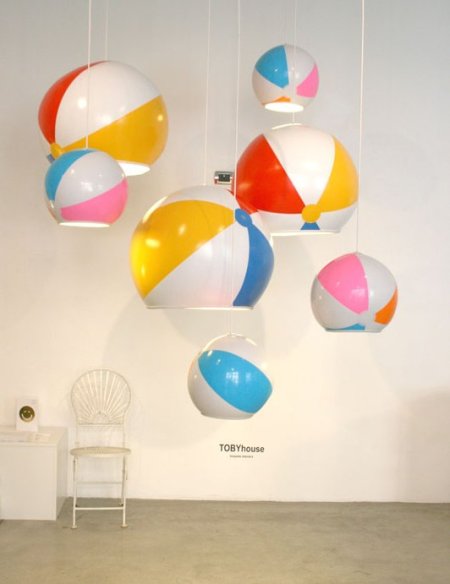You only live twice!
16/12/2009Run for your life!
11/12/2009“Pac-Manhattan is a large-scale urban game that utilizes the New York City grid to recreate the 1980’s video game sensation Pac-Man. This analog version of Pac-man was developed in NYU’s Interactive Telecommunications graduate program (http://itp.nyu.edu), in order to explore what happens when games are removed from their “little world” of tabletops, televisions and computers and placed in the larger “real world” of street corners, and cities.”
Big Games Manifesto
Big Games are large-scale, multiplayer games that include some form of real-world interaction.
Big Games point towards a future in which socially aware networks, smart objects, location sensing and mobile computing open up new ways for people to play.
Big Games use technology, but are not subservient to it.
Big Games are made out of people, connections, ideas, situations, and events.
Big Games have computers inside of them, not the other way around.
Big Games create a conscious confusion between the real and the imaginary, between ideas and objects, between information and space. Instead of the simulated worlds of computer games,
Big Games transform the physical space around us into a shared gameworld, brought to life by the choices, actions, and experiences of the players.
Big Games encourage a playful use of public space. They have their roots in the neighborhood games of childhood; in the campus-wide games and stunts of college; in the nerd-culture of live-action role playing and Civil War re-enactments; in the art-culture of Happenings and Situationism; in urban skateparks, paintball fields and anywhere people gather together to play in large numbers and large spaces.
Big Games are games, not academic exercises, not tech demos. They must be easy to understand but deep enough to encourage thoughtful play. They must have challenges and rewards. They must run the gamut from purely abstract formal systems to richly rendered narrative experiences. They must connect people to people whether they are strangers, rivals or old friends.
Big Games are human-powered software for cities, life-size collaborative hallucinations, and serious fun.
By Area/code
Play: PacManhattan
Wired – Manhattan Gets Pac-Man Fever
Q: Why should an architect care about computer games ?
Therefore, whatever!
04/12/2009Designing Interactions:
2009 flyer sticker for cosa nostra’s mustache party, is a potential source of pleasure!
front.
back.
Grow your own or use this one. Go natural or go fake but don’t go without one!
Food Design – engaging food and social activity
30/04/2009When designing you plan, calculate in advance or predict in search for new purposes. Food designers work to develop new concepts, inovative relationships between food and social activity.
“A food designer is somebody working with food, with no idea of cooking”. Inga Knölke, 1999

“3D-snack.
Pre-cut fruit system that allows you to verify that you get the whole fruit and from the same unit.”

“Fish Snack System.
Lets you eat grilled fish with one hand and standing. You squeeze then eat, so aura comes.”

“I-cakes.
The pie graphic indicates the ingredients of the cake in percentages. Decoration becomes information. Prototypes 2001”
Foodball, BCN
Foodball by Martí Guixé, Barcelona, Casa Camper.
“Food Design is a discipline which had its first opening in Barcelona in 1997 with Martí Guixé: SPAMT.
Food Design makes possible to think in food as an edible designed product, an object that negates any reference to cooking, tradition and gastronomy.
Guixé as a Food Designer builds edible products that are ergonomic, functional, communicative, interactive, visionary but radically contemporary and timeless.”
Martí Guixé
from food-designing.com
[According to Guixé, “modern food should be eaten without plates and utensils, taste good and be natural, healthy and fun to eat or with some new experience.” (…) The last great food design is sushi which was designed in part so that people would not have to stop playing cards to eat. Techno-tapas are designed for easy consumption while working on a computer.] from usefulandagreeable.com

[“Eating-design is to design from the verb ‘to eat’”.
Designers who work with the subject ‘food’ are often called ‘food designers’. According to Marije Vogelzang, food is already perfectly and beautifully designed by nature. She designs from the verb ‘to eat’. She is for example inspired by the origin of food, the preparation, etiquette, history or the culture of food. That is why she doesn’t call herself ‘food designer’but, as the first one in The Netherlands, ‘eating-designer’.
“There is no material coming so close to human beings as food”.
It is often thought that designers who work with food only design the shape of the food. Vogelzang’s aim is to look at the content and background of the food. The shape is just a tool to telle the story.
“You put my designs inside your body”.
After 10 years experience in food projects, Vogelzang has developed a philosophy with 8 inspirational points. 8 different ways to, as a designer, get inspired to work with food. Eating design is a uncultivated area with an open field of possibilities. The 8 point philosophy show the opportunities of this specialism.
“Food goes to the stomach, but it can also activate the brain and can call for strong memories and emotions”.
The 8 points are:
– senses
– nature
– cultuur
– society
– technique
– psychology
– science
– action]
Eating-designer Marije Vogelzang from design studio Proef here.
Beach Ball Lamps
29/04/2009Retro wallets
29/04/2009Santiago de Chile flea market
29/04/2009Multifunctional modular peace of furniture
14/04/2009Prenez Soin de Vous
08/04/2009
French artist Sophie Calle “He loves me not” Guardian interview here.

















